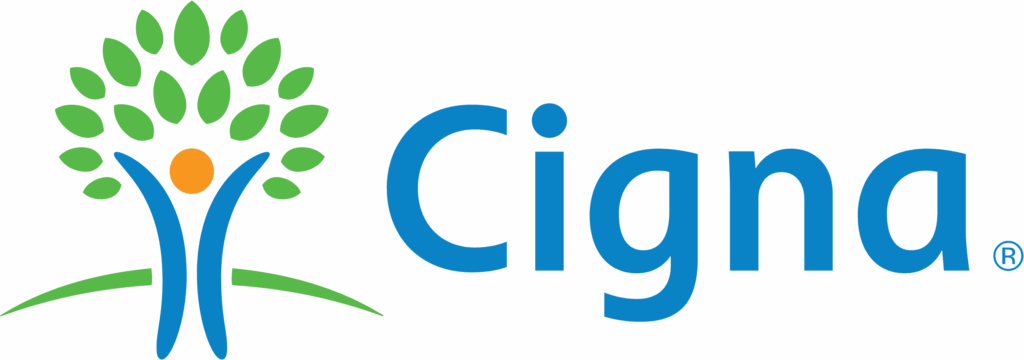
Intensive Outpatient Programs (IOP) for mental health in California provide structured, evidence-based treatment while allowing participants to continue living at home, work, or school. This guide explains what IOP mental health programs are, how they fit into the continuum of care, and why current research shows they effectively reduce symptoms and improve daily functioning for many conditions. Readers will learn core program components, condition-specific benefits for depression, anxiety, PTSD, and co-occurring disorders, plus how virtual IOP works and when to choose IOP versus higher or lower levels of care. Practical sections cover admission steps, insurance verification, cost factors, and aftercare planning, with actionable checklists and comparison tables to support decision-making. Throughout the article, keywords such as iop mental health ca, intensive outpatient program california, virtual IOP California, and IOP vs PHP California are woven naturally to help Californians find and evaluate appropriate care options.
An Intensive Outpatient Program (IOP) in California is a clinically structured outpatient service that delivers frequent, multi-modal treatment without requiring 24-hour inpatient care. IOPs typically combine group therapy, individual therapy, psychiatric medication management, and psychoeducation across multiple sessions per week, providing an intermediate intensity between weekly outpatient therapy and daytime Partial Hospitalization Programs (PHP). This structure allows patients to practice skills in real-life settings while receiving consistent clinical oversight, improving functional outcomes. Understanding the program’s components clarifies when IOP is the most appropriate next step for care.
IOP differs from standard outpatient therapy and higher-intensity options by offering greater session frequency and integrated services while maintaining residential independence. Typical IOP schedules involve several hours per day across multiple days each week, providing more intensive group-based skills training and regular psychiatric oversight than weekly therapy. Unlike PHP or inpatient care, IOP assumes relative safety and stability at home, making it suitable for patients who need structured support but do not require continuous supervision. Recognizing these distinctions helps patients and clinicians select the most suitable level of care.
Good candidates for IOP demonstrate significant symptoms that interfere with functioning but retain enough safety, housing stability, and motivation to participate in outpatient treatment. Clinical indicators include moderate-to-severe depression, persistent anxiety, symptoms of PTSD, or early relapse in substance use when integrated treatment is needed; contraindications include acute suicidality or unstable medical conditions requiring inpatient stabilization. Social factors such as reliable transportation or access to telehealth, supportive housing, and ability to engage in group settings improve the likelihood of success. Evaluating these eligibility elements informs appropriate referrals and preparation for enrollment.
IOP programs treat a range of mental health conditions—commonly depression, generalized anxiety disorder, panic disorder, PTSD, bipolar spectrum conditions in stabilization phases, and co-occurring substance use disorders with integrated approaches. Program components are tailored: for depression and anxiety, CBT-focused modules and behavioral activation are emphasized; for PTSD, trauma-focused therapies and stabilization skills are prioritized; for dual-diagnosis patients, combined SUD interventions and medication management are included. Mapping conditions to targeted interventions clarifies expected programming and outcomes.

Intensive Outpatient Programs deliver measurable clinical benefits by combining frequent therapeutic contact, evidence-based modalities, and access to psychiatry while preserving home and community functioning. The mechanism centers on skill acquisition in group settings, regular symptom monitoring, and rapid medication adjustments when needed—approaches linked to symptom reduction and improved daily functioning in recent studies. IOPs also facilitate peer support and practical practice of new coping strategies, accelerating recovery compared with scattered weekly therapy. These advantages make IOP a versatile option for many Californians seeking structured, effective outpatient care.
Before presenting condition-specific mappings, consider these primary benefits summarized as actionable features and outcomes.
| Condition | IOP Feature | Benefit |
|---|---|---|
| Depression | CBT modules + behavioral activation | Reduced depressive symptoms; improved daily activity and motivation |
| Anxiety disorders | Exposure-based and skills groups | Lower avoidance, improved coping, decreased panic frequency |
| PTSD | Trauma-focused therapy + stabilization | Reduced intrusive symptoms and improved emotion regulation |
| Co-occurring SUD | Integrated SUD programming + medication management | Coordinated relapse prevention and reduced substance use |
IOP supports recovery for anxiety and depression by delivering concentrated therapy sessions that teach cognitive restructuring, behavioral activation, and exposure or coping skills across repeated practice opportunities. Mechanistically, these interventions modify maladaptive thought patterns and increase engagement in reinforcing activities, producing symptom reduction and functional gains. Participants benefit from group feedback and homework assignments that bridge clinical learning with everyday situations, which accelerates skill generalization. Consistent monitoring and medication management further optimize symptom control, making IOP a robust option for many patients.
CBT/DBT-Informed Intensive Outpatient Treatment for Anxiety and Depression
received cognitive-behavioral therapy/dialectical behavior therapy (CBT/DBT)-based IOP
CBT/DBT-informed intensive outpatient treatment for anxiety and depression: A naturalistic treatment outcomes study, BD Johnides, 2022
Compared with traditional weekly outpatient psychotherapy, IOP provides greater intensity, routine peer support, and structured skill curricula that promote faster improvement for many conditions. The increased contact frequency supports regular progress tracking, rapid clinical adjustments, and accountability that enhances adherence. Group formats create opportunities for modeling, social reinforcement, and practical rehearsal of new behaviors, which standard individual therapy alone may not provide. These structural advantages often result in improved functioning and reduced need for higher levels of care.
Family involvement enhances IOP outcomes through psychoeducation, communication skills training, and systems-focused interventions that increase support for recovery outside clinical hours. When families participate in designated sessions, they learn relapse prevention strategies, how to support medication adherence, and ways to reinforce coping skills, which improves engagement and reduces relapse risk. Confidentiality and patient consent govern family participation, and clinicians balance privacy with effective family-based strategies. Incorporating family work into discharge planning strengthens community supports and long-term stability.
IOP programs in California typically combine evidence-based therapies—Cognitive Behavioral Therapy (CBT), Dialectical Behavior Therapy (DBT), trauma-focused approaches, group therapy, and psychiatric medication management—into coordinated treatment plans. The multidisciplinary team model pairs therapists, psychiatrists, and case managers to address symptoms, functioning, and social determinants of health. Current practice emphasizes tailoring modality mixes to diagnosis and individual needs, with technology-enabled supports for virtual delivery when necessary. Understanding these modalities helps patients anticipate session content and expected skill development.
Cognitive Behavioral Therapy (CBT) is a structured, time-limited therapy that targets the relationships between thoughts, emotions, and behaviors to reduce symptoms and improve functioning. In IOP settings, CBT appears as group lessons on cognitive restructuring, behavioral experiments, and activity scheduling, supplemented by individual sessions to personalize treatment. Frequent practice, homework assignments, and clinician feedback accelerate skill acquisition compared with less intensive models. CBT’s role in IOP is central for anxiety and depressive disorders due to its strong evidence base and measurable outcome metrics.
Dialectical Behavior Therapy (DBT) supports IOP patients by teaching core skills—mindfulness, distress tolerance, emotion regulation, and interpersonal effectiveness—within group skills training and individual coaching components. DBT addresses pervasive emotion dysregulation and self-harm behaviors by integrating behavioral targets, skills rehearsal, and a validating therapeutic stance. In IOP, DBT groups provide repetition and peer modeling, while individual sessions adapt skills to specific problems, enhancing behavioral stability. For patients with intense emotions or self-injurious behavior histories, DBT-oriented IOP programming reduces crises and improves coping.
Beyond CBT and DBT, IOP curricula commonly include trauma-informed therapy, motivational interviewing for substance-related goals, psychoeducation workshops, relapse prevention, and vocational or social skills training. These sessions enhance functional recovery by teaching practical strategies for sleep, stress management, and workplace or school reintegration. Case management and community resource linkage complement therapeutic work by addressing housing, benefits, or legal needs that affect mental health outcomes. Combined, these elements form a comprehensive, recovery-oriented program.

Virtual IOP programs deliver the same core services—group therapy, individual therapy, psychiatry, and psychoeducation—via secure telehealth platforms, expanding access for Californians in rural areas or with mobility constraints. The mechanism relies on synchronous video conferencing for group and individual sessions, supplemented by digital homework, secure messaging, and remote symptom monitoring. Virtual IOP preserves clinical intensity while reducing travel burden and supporting continuity when in-person attendance is impractical. Understanding technology requirements and privacy safeguards is essential for safe, effective virtual participation.
Telehealth IOP services typically use HIPAA-compliant video platforms that support group sessions, screen sharing, and secure documentation; recommended device specs include a webcam-enabled computer, tablet, or smartphone with stable broadband. Connectivity minimums (e.g., 5–10 Mbps) and updated browsers or apps improve session quality and reduce dropouts, while privacy measures include using private rooms and encrypted networks. Clinicians and programs often provide onboarding, troubleshooting tips, and contingency plans for audio-only participation when video fails. Ensuring adequate technology enhances engagement and therapeutic fidelity.
The following list outlines typical device and connectivity recommendations for virtual IOP participation:
These recommendations improve session reliability and privacy, reducing barriers to meaningful participation.
Virtual IOP increases accessibility by eliminating travel time, lowering geographic barriers, and supporting participation during weather or health disruptions, which improves retention. Remote delivery also allows programs to reach underserved populations and provides flexibility for school or work schedules. Potential limitations include reduced nonverbal cues in groups, digital divide issues, and challenges in conducting certain assessments remotely. Balancing these pros and cons helps patients choose the format that best supports engagement and outcomes.
California residents can access telehealth IOP services when programs hold appropriate state licensure and clinicians follow telehealth regulations; minors require parental consent and guardianship considerations for participation. Access depends on program licensure, payer rules, and the patient’s ability to meet privacy and technology requirements. Special populations—students, rural residents, or those with mobility impairments—may especially benefit from telehealth, while clinicians evaluate safety and crisis-planning suitability before enrollment. Clear eligibility screening ensures safe, effective remote care.
IOP occupies an intermediate intensity level between standard outpatient therapy and Partial Hospitalization Programs (PHP) or inpatient psychiatric care, offering multi-hour sessions several days weekly but without full-day hospitalization. The comparison centers on hours per week, clinical oversight, and residential requirements: inpatient care offers continuous supervision, PHP delivers full-day structured care for acute needs, and IOP provides frequent but part-time treatment suitable for stabilized patients. This side-by-side understanding assists clinicians and patients in matching clinical needs to the appropriate level of care.
| Program Type | Intensity (hrs/day, days/week) | Typical Use Cases |
|---|---|---|
| Inpatient psychiatric care | 24 hours/day; continuous | Acute safety risk, medical stabilization |
| Partial Hospitalization Program (PHP) | 5–8 hours/day, 5–7 days/week | Acute symptom reduction needing daily structure |
| Intensive Outpatient Program (IOP) | 2–4 hours/session, 3–5 days/week | Moderate severity, needs structured therapy with home living |
| Standard outpatient therapy | 45–60 minutes, 1 session/week | Mild-to-moderate symptoms, ongoing therapy |
IOP generally involves part-day sessions several times per week, while PHP provides near full-day treatment and more intensive clinical monitoring, often spanning multiple weeks until stabilization. Duration of IOP programs commonly ranges from several weeks to a few months with individualized pacing, whereas PHP is typically shorter and more focused on rapid acute stabilization. Staff-to-patient ratios and availability of medical oversight increase with program intensity, influencing suitability based on safety and symptom severity. Recognizing these differences guides safe step-up or step-down transitions.
Patients should choose IOP when they require more structure than weekly outpatient care but are medically and psychiatrically stable enough to remain at home, have reliable supports, and can safely commute or access virtual sessions. Indications for higher-level care include active suicidality, severe withdrawal or intoxication needing medical management, or significant functional impairment that impedes outpatient engagement. Clinical vignettes—such as a college student with worsening depression but no imminent safety risk—illustrate typical IOP candidacy and clarify decision thresholds for escalation.
Insurance coverage varies by payer and plan, but many insurers cover IOP services when deemed medically necessary, often requiring prior authorization and specific CPT/HCPCS codes for behavioral health services. Patients frequently encounter differences in co-payments, out-of-pocket limits, and prior authorization requirements between IOP, PHP, and inpatient care. Proactively verifying benefits and requesting pre-certification reduces unexpected costs and facilitates timely access to services. Understanding common insurer practices prepares patients to navigate coverage efficiently.
Admission to an IOP typically begins with an initial clinical assessment that evaluates diagnosis, safety, medication needs, and social supports; this assessment informs suitability and individualized treatment planning. After assessment, programs and insurers may require authorization steps, intake paperwork, and scheduling of orientation or baseline measures. Typical timelines vary but many programs facilitate enrollment within days to a couple of weeks depending on demand and insurance verification. Clear documentation and readiness to answer clinical and demographic questions speed the process and set clear expectations for treatment start.
Getting started involves obtaining a referral from a clinician or self-referring to a program, completing an intake assessment, and discussing goals and scheduling with clinical staff. Key initial questions include asking about program structure, modalities offered (CBT, DBT, trauma-focused care), telehealth availability, and how medication management is handled. Being prepared with recent clinical notes and medication history expedites intake and ensures accurate treatment planning. Early steps focus on establishing safety planning and clear treatment objectives.
These steps orient prospective participants to the administrative and clinical actions needed to begin care.
Programs commonly request a government-issued ID, insurance card, a list of current medications, relevant medical or psychiatric records, and emergency contact information, along with signed consent and privacy forms. Insurers may request diagnosis codes and documentation of medical necessity for behavioral health services. Preparing this documentation in advance and asking the program which behavioral health codes they use simplifies verification. Having records and contact information ready accelerates authorization and intake scheduling.
Typical IOP length ranges from 6 to 12 weeks, with many programs offering flexible extensions based on clinical progress, relapse prevention needs, or transitions to lower-intensity care. Graduation criteria often include symptom reduction, demonstrated skill use, and a clear aftercare plan. Individual factors—diagnosis severity, co-occurring conditions, social stability—affect duration and intensity adjustments. Discussing expected timelines during intake helps set goals and aligns expectations for follow-up care.
Costs for IOP vary depending on provider type, program duration, and payer coverage; many patients find IOP covered under private insurance plans or Medi-Cal when medically necessary, though co-pays and prior authorization requirements differ. Key cost drivers include frequency of sessions, inclusion of psychiatry or medication management, and whether services are delivered in-person or virtually. Financial assistance options, sliding-scale fees, and payment plans may be available at some programs, so proactive verification and asking about charity care reduces financial uncertainty.
Introductory verification guidance and a concise mapping table follow to assist patients in planning.
| Insurance Type / Payer | Typical Coverage Elements | Patient Action (verify steps) |
|---|---|---|
| Medi–Cal / Medicaid | IOP often covered with authorization | Call member services; ask about behavioral health IOP coverage and required prior auth |
| Private commercial plans | Varies; may require medical necessity documentation | Request mental health benefit details and pre-authorization procedures |
| Uninsured / self-pay | Sliding scale or payment plans possible at some providers | Ask providers about sliding-scale eligibility and available payment plans |
Medi–Cal and many private insurers include IOP coverage when services meet medical necessity criteria, though specific authorization and documentation rules differ by plan. Patients should inquire about behavioral health benefits, mental health parity protections, and any visit limits or network restrictions that may apply. Obtaining prior authorization and confirming in-network provider status reduces out-of-pocket costs. Verifying coverage early prevents treatment delays and unexpected billing.
Some programs offer sliding-scale fees, charity care, or structured payment plans for patients without full coverage, and community mental health centers may provide lower-cost options. Grants, local behavioral health funding, or nonprofit resources can also offset costs for eligible individuals. Asking programs directly about financial assistance options and required documentation is essential. Exploring these paths helps ensure affordability for those who need IOP services.
Patients can verify benefits by calling the insurer’s member services number and asking specific questions about behavioral health IOP coverage, prior authorization requirements, in-network provider lists, and expected co-insurance or copays. Use sample questions such as: “Does my plan cover intensive outpatient mental health treatment? What CPT or authorization codes are required? Are there limits on number of sessions?” Document the representative’s name, reference number, and any authorization details for provider coordination. Proactive verification accelerates authorization and reduces billing uncertainty.
Common questions involve daily structure, capacity to treat co-occurring disorders, and aftercare planning; clear answers help set realistic expectations about what IOP offers and how it supports sustained recovery. Addressing these questions directly—what a typical day looks like, how dual diagnosis is handled, and how discharge planning proceeds—assists patients in preparing for participation and aligning goals with program offerings. The following concise answers match typical patient inquiries and support informed consent.
A typical IOP day includes scheduled group therapy or skills training, brief individual therapy or medication check-ins, and psychoeducational sessions, often totaling a few hours with breaks. Group modules focus on skill acquisition and practice, while individual sessions personalize treatment plans and review progress. Time is also allocated for homework assignments and planning for community-based application of skills. This routine balances intensive therapeutic contact with opportunities to apply learning in real-world contexts.
Yes, many IOPs provide integrated dual-diagnosis programming that combines mental health therapies with substance use interventions, relapse prevention, and medication-assisted treatment coordination when indicated. Integrated models reduce care fragmentation by addressing both conditions simultaneously with consistent clinical oversight and cross-disciplinary teams. Programs vary in their capacity, so discussing integrated services during intake ensures appropriate treatment matching. When higher-intensity medical detox or inpatient SUD services are needed, programs coordinate step-up referrals.
Aftercare planning typically includes referrals to standard outpatient therapy, community support groups, continued psychiatric follow-up, and crisis-management contacts; plans emphasize relapse prevention and gradual reduction in session intensity. Clinicians collaboratively develop step-down options, schedule follow-up appointments, and connect patients with community supports like peer groups or vocational services. Effective aftercare enhances long-term maintenance and reduces readmission risk. Clear timelines and responsibilities are established before discharge to support continuity.
Finding quality IOP centers involves evaluating accreditation, staff credentials, evidence-based programming, outcome tracking, and patient privacy practices rather than relying solely on ratings. Search strategies include city-level queries, consulting state behavioral health directories, and verifying program licensure and treatment modalities offered. During outreach, ask about credentialing, staff-to-patient ratios, and how programs measure outcomes to assess alignment with your needs. A methodical evaluation ensures selection of programs that match clinical goals.
Choose programs that demonstrate licensed clinicians, use evidence-based therapies (CBT, DBT, trauma-focused care), maintain clear privacy practices, and provide measurable outcome data or follow-up processes. Red flags include vague treatment descriptions, lack of credential transparency, or poor crisis protocols. When evaluating programs, ask targeted questions about clinical team composition, telehealth security, family involvement options, and how they handle medication management. Prioritizing these criteria improves the likelihood of selecting effective care.
Rather than naming specific centers, use a consistent methodology to identify top-rated facilities: check state licensing records, look for accreditation or certification statements, review recent outcome data or program descriptions, and consult local behavioral health resources for referrals. Combining objective credential checks with recent patient reviews and referral sources produces a balanced assessment of program quality. Regularly updating this research ensures current, relevant selections for your city.
Patient testimonials illustrate personal recovery journeys and can provide insight into program experiences, but they are anecdotal and not a substitute for outcome data. Testimonials are useful for understanding perceived program strengths—such as group cohesion or staff support—but should be weighed alongside measurable outcomes, clinical credentials, and transparent performance metrics. Asking programs for aggregate outcome data or references provides a more reliable gauge of effectiveness than testimonials alone.
For assistance locating local IOP programs and verifying benefits, consider the following neutral resource recommendations: search state and county behavioral health directories, contact your insurer’s member services for covered providers, and prepare documentation for intake and authorization. If you need to refine options, ask providers about telehealth availability, integrated dual-diagnosis services, and sliding-scale or payment-plan options.
Find local IOP programs by confirming program licensure, asking targeted questions about services and outcomes, and verifying insurance coverage before scheduling an intake assessment.
Next steps and suggested actions: call your healthcare provider to discuss IOP suitability, verify insurance benefits using the checklist above, and search local behavioral health directories to compare program offerings and modalities. These actions help you move from consideration to scheduled care with clarity and preparedness.
We are 100% in Network Provider. Most of our clients pay $0 out of pocket.



